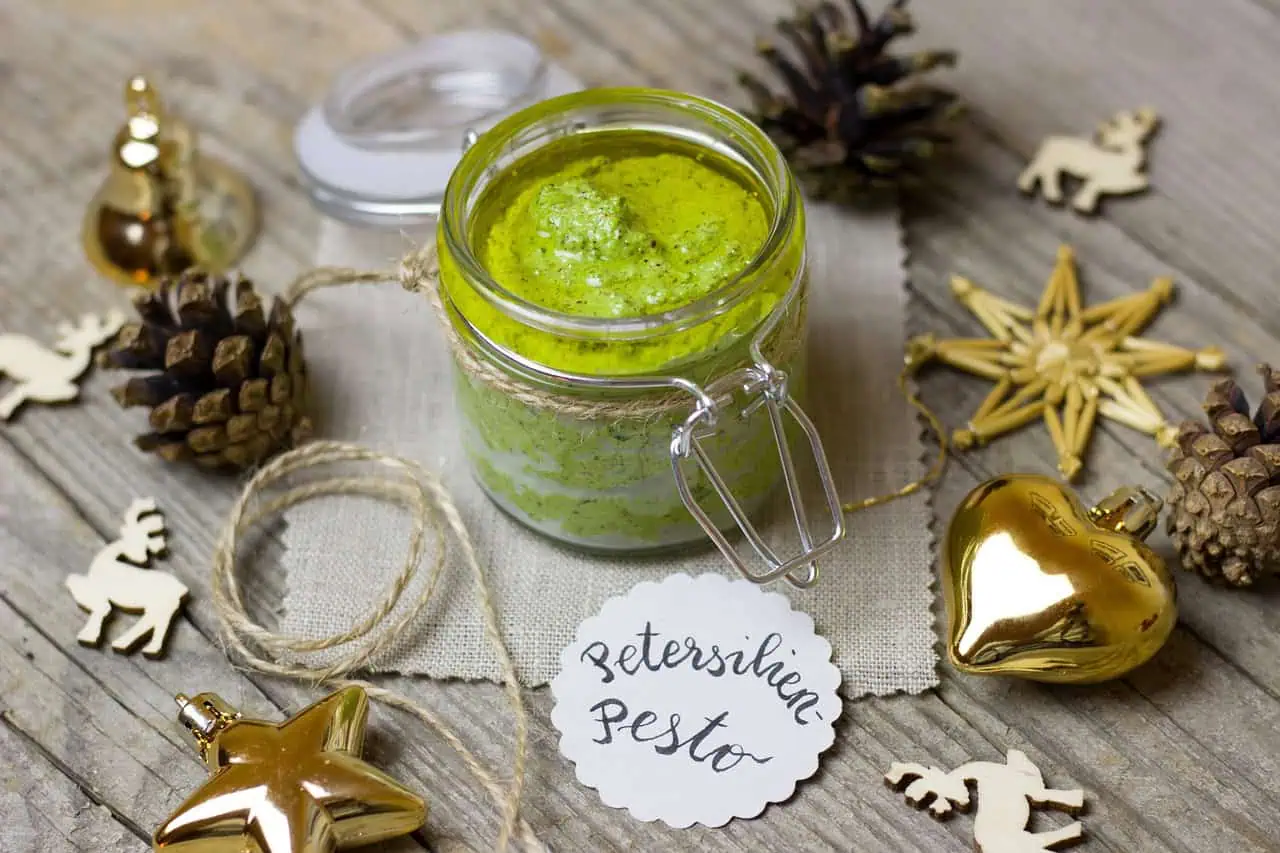Exact Answer: 2 days
Pesto can be purchased, prepared as well as stored in different ways using various ingredients. The shelf life of pesto is affected by the typed of ingredient used in its preparation. Just like most food products, pesto features best by date and not expiry date.
Simply because of this difference, when the best before date has elapsed, you might consider using pesto to compliment some of your favorite meals. In connection to that, we shall be discussing how long does pesto last and why in this article.

How long does pesto last?
| Pesto Type | Lifespan |
| Homemade (Room Temperature) | 2 days |
| Homemade (Refrigerator) | 1 week |
| Homemade (Freezer) | 4 months |
| Canned (Room Temperature) | 7 days |
| Canned (Refrigerator) | 2 weeks |
| Canned (Freezer) | 8 months |
When refrigerated, pesto will have a shelf life of approximately one to three weeks.

Furthermore, you might consider freezing it for an extended shelf life. Usually, the shelf life of pesto is determined by various factors such as best by date, the method of preparation, and the method of storage
Often you can purchase pesto canned, fresh or bottled. You can as well design a homemade pesto with the use of a blender or food processor. The best way of increasing your pesto’s shelf life is by storing it in the refrigerator.

Chilly temperature helps in inhibiting the growth of microbes and delaying the degradation of your food. Furthermore, the cold temperature will help prevent your oil from going rancid.
Usually, homemade pesto has a shelf life of a week when refrigerated and a maximum of two weeks for opened pesto source kept in the fridge. For unopened pesto stored in the refrigerator, its shelf life is approximately three weeks.
Frozen homemade pesto has a shelf life of approximately four months, whereas a store-bought pesto has eight months shelf life when frozen.
Why does pesto have a short shelf life?
Pesto is prepared using highly perishable products such as pine nuts, fresh basil, and Olive oil. Since these products are highly perishable, they reduce the shelf life of pesto sauce. Furthermore, the method used in preserving pesto sauce will affect its shelf life as well.
When not refrigerated, the opened pesto shelf life is five to seven days. Therefore, refrigerating your pesto will help increase its shelf life significantly.
How to tell a spoilt pesto?
Telling a pesto that has gone rancid is very easy. Usually, fresh pesto features a shade of green; however, after some time, the sauce will oxidize. The oxidation process starts from the top since it is not well submerged in the oil.
Usually, the olive oil helps in preventing oxidation by blocking out oxygen. This will help in preventing the source from turning brown after a while.
A rancid pesto turns from green shade to an odd shade of brown. You may as well consider checking on the armor when rotten it will produce unpleasant odor which resembles old oil. Such a pesto is not safe for consumption. When there is a change in the pesto’s taste, it is advisable to get rid of it since it might be rancid.
Conclusion
When not taken good care of, pesto sauce will go rancid quickly. Therefore, you should consider storing it in a freezer or refrigerator to help with increasing its shelf life.